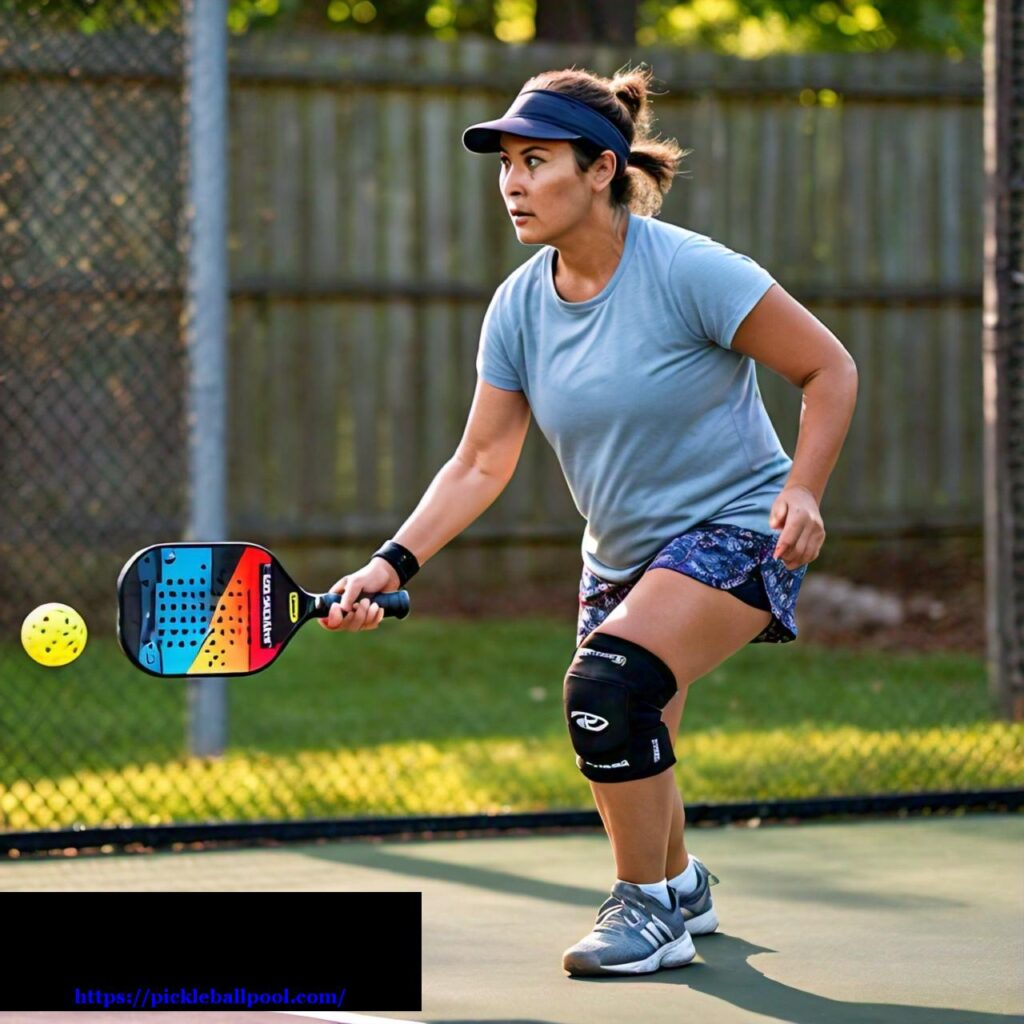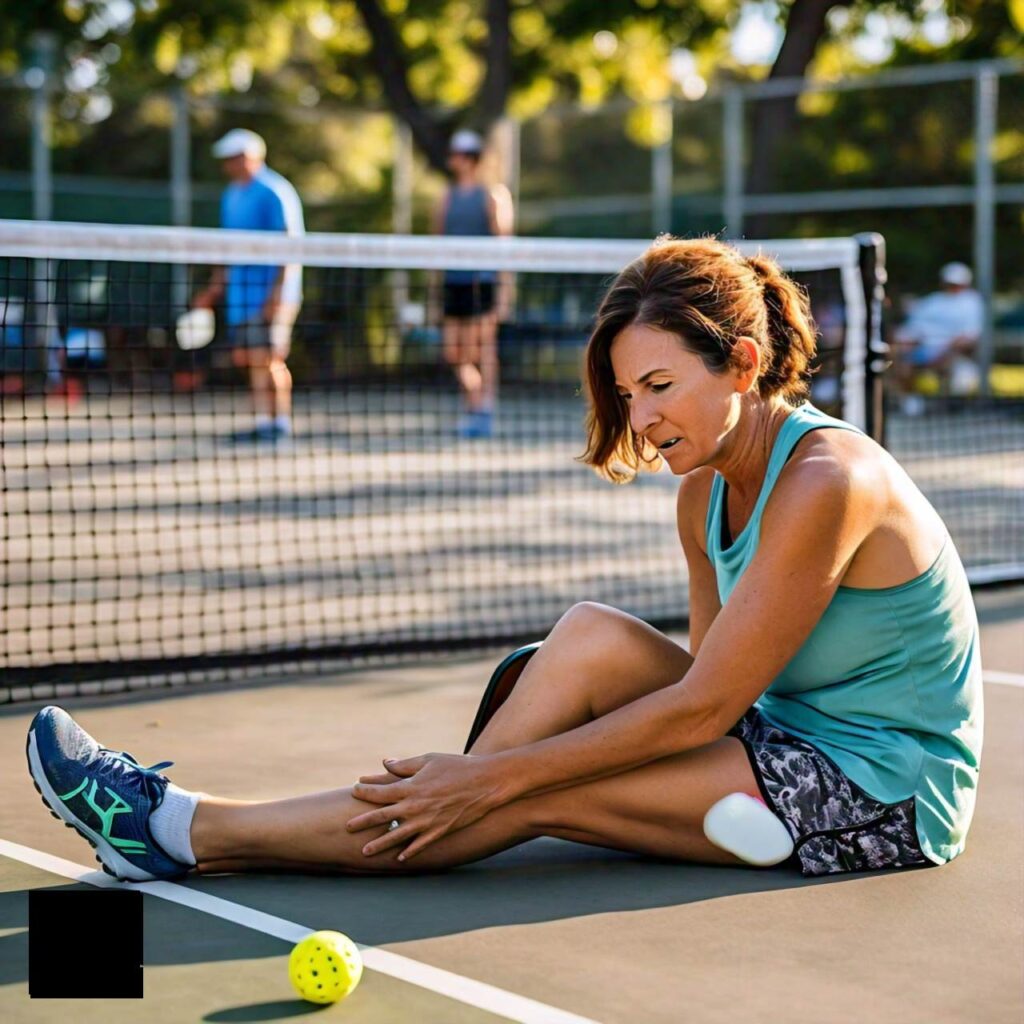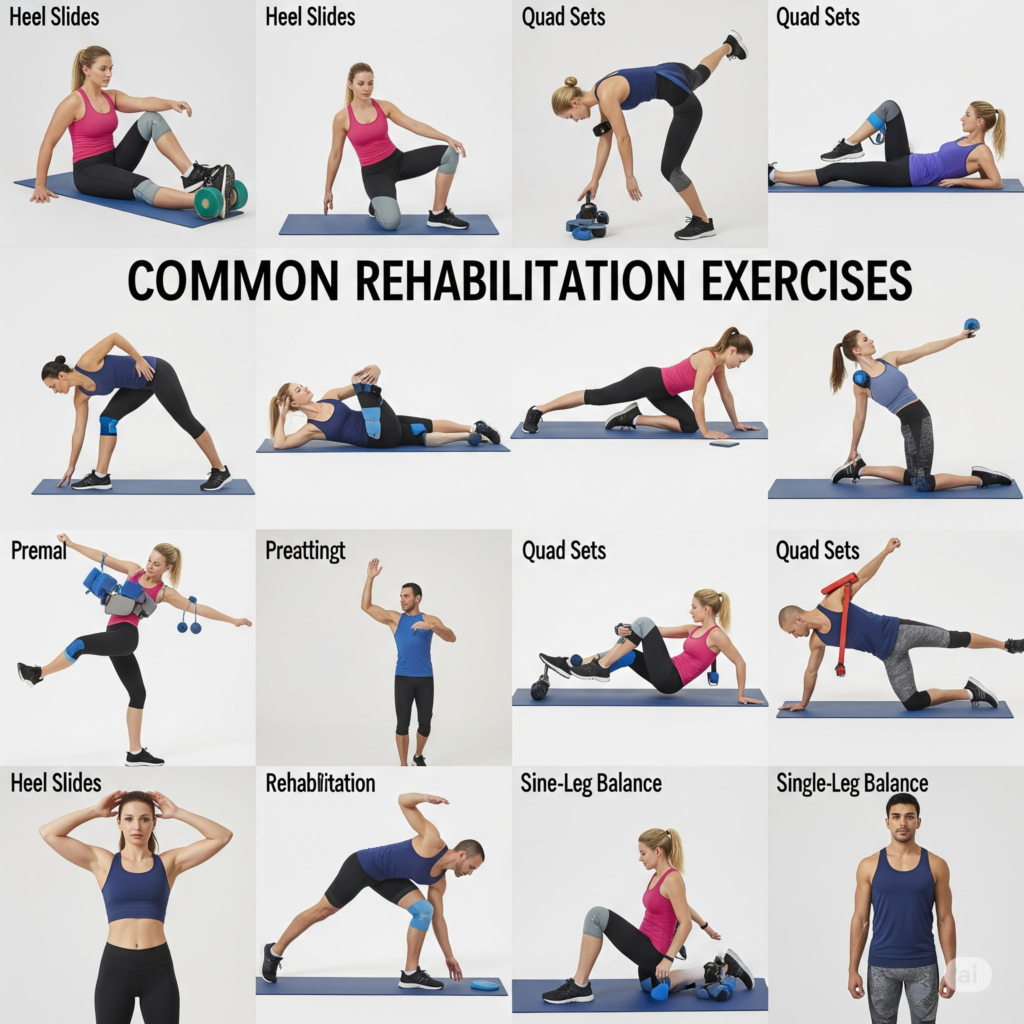The Ultimate Guide to Playing Pickleball After Knee Replacement
The unmistakable pop of the pickleball paddle hitting the wiffle ball, the quick volleys at the net, the camaraderie on the court – it’s no wonder pickleball has exploded in popularity across all age groups. It’s a sport that offers fantastic exercise, social engagement, and pure fun. However, for avid players facing the prospect of knee replacement surgery, a significant question looms: will I ever be able to get back on the pickleball court? The constant pivoting, quick stops, and lateral movements inherent in the game naturally raise concerns about the longevity and stability of a new knee joint.
If this question resonates with you, take heart. The overwhelming consensus among orthopedic specialists and physical therapists is that yes, you generally can play pickleball after knee replacement, provided you approach your recovery and return to play with careful planning, patience, and respect for the healing process. Recent studies even highlight impressive success rates, with a significant majority of players returning to racquet sports, including pickleball, after joint replacement surgery, often playing as well as or even better than before.
This guide synthesizes expert recommendations and best practices to provide a comprehensive, evidence-informed roadmap for safely navigating your recovery and making a triumphant return to the pickleball court you love.

Understanding Your Knee Replacement and the Road to Recovery
You May Like: Top 7 best Portable Pickleball Net for all Weathers

Knee replacement surgery, whether total (TKR) or partial, is a significant medical procedure designed primarily to alleviate chronic knee pain, often caused by osteoarthritis or injury, and restore function to the joint. During the surgery, damaged cartilage and bone are removed and replaced with artificial components, typically made of metal alloys, high-grade plastics, and polymers. The goal is to create a new, smooth joint surface that allows for improved mobility and a significant reduction in pain, ultimately enhancing your quality of life.
However, it’s crucial to understand that recovery from knee replacement is not an overnight fix; it’s a marathon, not a sprint. The healing process involves not just the surgical site itself, but also the adaptation of surrounding muscles, ligaments, and tendons. Patience is paramount, as individual recovery timelines can vary significantly based on factors like pre-surgery fitness levels, overall health, the complexity of the surgery, and adherence to rehabilitation protocols.
While many people target a return to lower-impact sports like pickleball within a 3-to-6-month window post-surgery, orthopedic experts often emphasize that it can take up to a full year to regain optimal strength, balance, endurance, and confidence in the new joint. Rushing this process is one of the surest ways to risk complications or setbacks.
Above all, there is one non-negotiable prerequisite before you even consider stepping back onto the pickleball court: you must receive explicit clearance from both your orthopedic surgeon and your physical therapist.
They are the only ones qualified to assess your individual healing progress, joint stability, muscle strength, and overall readiness to handle the specific demands of the sport safely. Attempting to play before getting their green light significantly increases your risk of injury or damage to the new joint.
You May Like: 7 Best Pickleball Balls for Cold Weather
Pickleball Post-Surgery: Balancing Benefits and Knee Stress
Pickleball holds immense appeal for individuals recovering from knee replacement, and for good reason. Compared to high-impact activities like running or basketball, it places considerably less jarring force on the joints. The smaller court size reduces the need for extensive sprinting, and the social nature of the game provides motivation and enjoyment, which are vital during a potentially long recovery period. It offers a fantastic way to stay active, maintain cardiovascular health, and reconnect with a beloved hobby.
However, describing pickleball as purely
“low-impact” can be slightly misleading in the context of a recovering joint. The sport involves specific movements that place unique stresses on the knee, which must be understood and managed:
•Lateral Movements (Shuffles): Constant side-to-side shuffling along the non-volley zone (“kitchen”) line requires significant stability from the muscles surrounding the knee, particularly the inner and outer thigh muscles (adductors and abductors) and glutes. Weakness in these areas can lead to instability and strain on the new joint.
•Pivoting and Quick Direction Changes: Reacting to shots often involves rapid pivots and turns. These rotational forces can place considerable stress on the knee joint, especially if muscles haven’t fully recovered their strength and control.
•Sudden Stops and Starts: The quick bursts of movement followed by abrupt stops common in pickleball create impact forces that travel through the leg, including the knee joint.
•Lunging for Shots: Reaching for low volleys or wide shots often involves lunging, which places significant weight and force on the front knee.
•Repetitive Stress: Even if individual movements are managed, the repetitive nature of these actions over the course of a game can lead to cumulative stress on the joint and surrounding tissues.
Understanding these specific demands is crucial. It highlights why a generic recovery isn’t enough; rehabilitation must specifically prepare your knee and supporting musculature for the unique challenges of pickleball.

The Cornerstone: Rehabilitation Before and After Surgery
Successful return to any activity after knee replacement, especially a dynamic sport like pickleball, hinges almost entirely on the quality and consistency of your rehabilitation. This process ideally starts even before surgery (prehab) and continues diligently for months afterward.
Prehabilitation (“Prehab”): If you know you’re heading for knee replacement surgery, engaging in prehab exercises can significantly benefit your recovery. Strengthening the muscles around the knee – particularly the quadriceps, hamstrings, and glutes – before the operation provides a stronger foundation for post-surgical recovery.
Studies suggest prehab can lead to faster initial recovery, better pain management, and potentially quicker return to function. Consult your doctor or a physical therapist about appropriate prehab exercises if surgery is planned.
Post-Surgery Physical Therapy (PT): This is the absolute bedrock of your recovery. Working closely with a qualified physical therapist is not optional; it’s essential. Post-surgery PT focuses on several critical goals tailored to your progress:
•Restoring Range of Motion (ROM): Gentle exercises help regain the ability to bend (flexion) and straighten (extension) your knee. Achieving target ROM benchmarks set by your surgeon and PT is vital for normal movement patterns.
•Building Strength: Targeted exercises progressively strengthen the quadriceps (front of thigh), hamstrings (back of thigh), glutes (buttocks), and core muscles. These muscles are crucial for stabilizing the knee joint during pickleball movements.
•Improving Balance and Proprioception: Proprioception is your body’s sense of its position in space. Surgery can disrupt this sense in the knee. Balance exercises help retrain this awareness, reducing the risk of falls or awkward movements on the court.
•Functional Movement Training: As you progress, PT incorporates exercises that mimic real-life activities and eventually sport-specific movements.
Working With Your Physical Therapist: Open communication is key. Inform your PT about your goal of returning to pickleball early on. They can tailor your rehabilitation program to include exercises specifically designed to prepare you for the demands of the sport. Adhere strictly to their guidance regarding exercise frequency, intensity, and progression.
Common Rehab Exercises (Examples Only – Your PT will prescribe specifics):
•Early Phase: Heel slides, ankle pumps, quad sets (tightening thigh muscle), gentle knee bending.
•Mid Phase: Straight leg raises, mini-squats, hamstring curls, step-ups, stationary cycling.
•Later Phase: Single-leg balance, controlled lunges, agility drills (as appropriate and cleared).

Critical Warning: One common mistake patients make is discontinuing formal physical therapy too early, often once the initial pain subsides or basic mobility returns. This is a significant error. Completing the full course of PT, including the later stages focused on strength, balance, and sport-specific preparation, is vital for minimizing re-injury risk and ensuring your knee is truly ready for the dynamic stresses of pickleball.
Are You Ready? Key Milestones for a Safe Return to Pickleball
Feeling eager to get back on the court is natural, but enthusiasm must be tempered with objective readiness. Returning too soon is a recipe for setbacks. Your surgeon and physical therapist will use a combination of factors to determine when it’s safe for you to resume playing pickleball. While individual criteria vary, here are the key milestones generally considered:
1.The Official Green Light: This cannot be stressed enough – you need formal clearance specifically for pickleball from both your orthopedic surgeon and your physical therapist.
2.Healing Checkpoints: Your surgical incision must be fully healed with no signs of infection. Significant post-operative swelling and inflammation should have subsided substantially.
3.Pain Management: You should experience minimal to no pain in the knee during normal daily activities (walking, climbing stairs) and during your prescribed physical therapy exercises.
4.Range of Motion Goals: You should have achieved the specific ROM targets set by your surgeon and PT. This typically involves near-complete straightening (extension) and sufficient bending (flexion) to comfortably perform movements like squatting or lunging.
5.Strength Benchmarks: Your physical therapist will perform tests to assess the strength of your quadriceps, hamstrings, and glutes. You need to demonstrate adequate strength, often compared to your non-operative leg, to properly support and control the knee during dynamic movements.
6.Balance and Stability: You must demonstrate good balance and control, often assessed through tests like standing on your operated leg for a set duration (e.g., 30 seconds) without significant wobbling or loss of balance.

Meeting these milestones indicates that your knee has likely recovered sufficiently to begin the gradual process of returning to pickleball. It does not mean you can immediately jump back into intense, competitive play.
Your Step-by-Step Game Plan for Getting Back on Court
Receiving clearance is just the beginning of your return-to-play journey. A structured, phased approach is essential to minimize risk and build confidence. Think of it as a progressive training program for your new knee.
(Phase 1) Pre-Game Preparation: Setting the Stage for Success
Before your first session back, ensure all systems are go:
•Final Medical Confirmation: Double-check your clearance with your PT and surgeon.
•Gear Up – Choosing the Right Equipment: Your equipment plays a vital role in protecting your knee.
•Footwear is Paramount: Ditch the running shoes! Invest in high-quality court shoes specifically designed for sports like tennis or pickleball. These offer superior lateral stability (side-to-side support) compared to running shoes, which are designed for forward motion. Look for good cushioning to absorb impact and a non-marking sole suitable for court surfaces. Some brands now offer pickleball-specific shoes worth considering.
•Knee Brace or Sleeve (Optional): Discuss this with your PT or doctor. While not always necessary, some players find a neoprene sleeve provides warmth and compression, potentially improving proprioception (your sense of joint position). A more structured brace might be recommended in specific cases, but rely on professional guidance for selection and use.
•Mastering the Warm-Up: Never skip your warm-up! A thorough warm-up increases blood flow to muscles, improves flexibility, and prepares your body for activity. Include 5-10 minutes of:
•Light cardio (brisk walking, light jogging, cycling).
•Dynamic stretches (leg swings front-to-back and side-to-side, torso twists, arm circles).
•Activation exercises (mini-squats, walking lunges if cleared).
•Perfecting the Cool-Down: Equally important is the cool-down, which helps improve flexibility and reduce post-exercise soreness. Dedicate 5-10 minutes to:
•Static stretching: Hold stretches for major muscle groups (quadriceps, hamstrings, calves, glutes, hip flexors) for at least 30 seconds each. Focus on gentle, sustained stretches, not bouncing.

(Phase 2) Easing Back In: The Gradual Return
This phase is all about patience and listening to your body:
•Start Slow and Short: Your initial sessions should be brief (perhaps 15-20 minutes) and low intensity. Focus on simply getting used to moving on the court again.
•Focus on Form, Not Competition: Begin with controlled hitting against a wall or gentle rallying with a partner. Avoid competitive games initially. Concentrate on smooth, controlled movements.
•Doubles is Your Friend: Playing doubles significantly reduces the amount of court you need to cover, placing less stress on your knee. Stick to doubles play for the initial weeks or months.
•Listen Intently to Your Body: This is your most crucial guide. Pay close attention to any signals from your knee. Stop immediately if you experience sharp pain, a feeling of instability, locking, or a significant increase in swelling. Mild muscle soreness is expected, but joint pain is a red flag. Report any concerns to your PT or doctor promptly.
•Gradual Progression is Key: If your initial sessions go well with no adverse reactions, you can slowly increase the duration (e.g., add 5-10 minutes per week) and then gradually increase the intensity (faster movement, more challenging drills) over several weeks or months. Progression should always be based on tolerance and lack of pain or swelling.
•Manage Your Ego: It can be frustrating not playing at your pre-surgery level. Accept that it takes time. Consider playing with partners who are at a slightly lower skill level initially. This allows you to focus on safe movement and rebuilding confidence without the pressure of high-intensity play.
(Phase 3) Adapting Your Technique: Playing Smarter
As you regain strength and endurance, refining your technique can further protect your knee:
•Smooth and Controlled Movements: Make a conscious effort to avoid abrupt stops, jerky pivots, and jumping for shots. Focus on fluid transitions and controlled deceleration.
•Smart Footwork: Use smaller, more frequent steps rather than large lunges whenever possible. Anticipate your opponent’s shots to position yourself earlier, reducing the need for last-second, high-stress movements.
•Modified Strokes: Some players find that slightly shorter backswings on groundstrokes can reduce rotational stress on the knee. Experiment to see what feels comfortable and stable.
•Consider Professional Guidance: Taking a lesson or two from a qualified pickleball coach who understands your situation can be invaluable. They can help you identify and modify any movement patterns that might be putting unnecessary stress on your new knee.
(Phase 4) Playing for the Long Haul: Sustainable Strategies
Once you’re comfortably back playing regularly, focus on maintaining your knee health for years to come:
•Maintain Your Gains: Don’t stop doing your exercises! Continue with regular strength, flexibility, and balance exercises as part of your routine fitness program to keep the muscles supporting your knee strong and responsive.
•The Power of Cross-Training: Avoid playing pickleball every single day. Incorporate other low-impact activities like swimming, cycling, elliptical training, or walking into your week. This maintains fitness while giving your knee a break from the specific stresses of pickleball.
•Court Surface Considerations: Be mindful of playing surfaces. Softer surfaces like indoor gym floors or clay courts (if available) are generally kinder to joints than hard asphalt or concrete courts. If playing on harder surfaces, ensure your footwear has excellent cushioning.
•Fueling Recovery: Pay attention to nutrition and hydration. A balanced diet rich in anti-inflammatory foods (fruits, vegetables, omega-3 fatty acids) and adequate hydration support overall joint and muscle health.
Addressing Common Questions and Concerns
It’s natural to have questions as you navigate your return to pickleball. Here are answers to some common concerns:
•Will playing pickleball wear out my new knee faster? Modern knee implants are designed to be durable, often lasting 15-20 years or more. While extremely high-impact activities might theoretically increase wear over the very long term, playing controlled, low-to-moderate impact pickleball as recommended is generally considered safe for implant longevity by most surgeons. The benefits of staying active often outweigh the minimal theoretical risk. Discuss implant longevity concerns with your surgeon.
•What specific movements should I absolutely avoid initially? In the early stages of your return, definitely avoid jumping (e.g., for overhead smashes), deep lunges where your knee goes far past your toes, and aggressive, sharp pivots or twisting motions on a planted foot.
•When can I progress to playing singles? This depends entirely on your individual recovery, strength, and stability. Singles requires significantly more court coverage and endurance. Discuss this progression specifically with your physical therapist; it will likely be several months after you’ve comfortably returned to doubles play.
•What if I experience occasional aches versus sharp pain? Mild muscle soreness after increasing activity is normal. However, sharp, localized joint pain, persistent aching within the joint, swelling, or feelings of instability are red flags that warrant stopping play and consulting your PT or doctor.
•Is the advice similar for hip replacements? While this guide focuses on knee replacements, much of the advice regarding gradual return, physical therapy, consulting professionals, proper warm-ups/cool-downs, and listening to your body also applies to returning to pickleball after hip replacement surgery. However, specific movement precautions might differ, so always follow your surgeon and PT’s guidance for your specific type of replacement.
The Mental Game and Positive Outlook
Returning to a beloved sport after major surgery isn’t just a physical challenge; it’s a mental one too. It’s common to experience frustration with slower progress, fear of re-injury, or a temporary dip in confidence. Acknowledge these feelings but focus on maintaining a positive outlook.
Celebrate small victories along the way – completing a PT session, playing for 15 minutes without pain, hitting a good shot. Remember the data: most people successfully return to play. Drawing inspiration from the fact that many athletes successfully return to high-level sports after joint replacements can also be motivating. Patience, persistence, and a focus on progress, not perfection, are key components of your mental game during recovery.
Conclusion: Your Successful Pickleball Comeback
A knee replacement doesn’t have to mean hanging up your pickleball paddle for good. By embracing a journey marked by patience, diligent rehabilitation guided by your surgeon and physical therapist, a carefully planned gradual progression, meticulous preparation, and consistently listening to your body, a safe and enjoyable return to the pickleball court is a highly achievable goal for most individuals. Follow the steps outlined in this guide, stay positive, and look forward to once again experiencing the joy and camaraderie of the game.
Important Disclaimer
The information provided in this article is intended for general knowledge and informational purposes only, and does not constitute medical advice. It is essential to consult with your own orthopedic surgeon, physician, or qualified physical therapist regarding your specific medical condition, treatment plan, and suitability for returning to pickleball or any other physical activity after knee replacement surgery. Do not disregard professional medical advice or delay in seeking it because of something you have read in this article.
References
(Placeholder: If specific studies or guidelines were heavily relied upon, they could be listed here. E.g., Reference to the AAOS study on return to racquet sports, general guidelines from the American Association of Hip and Knee Surgeons (AAHKS), etc.)







